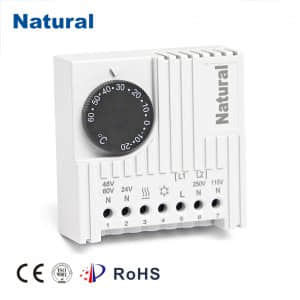Efficient Temperature Control with 24V Thermostats
Release time:2023-09-17 11:21:33
In modern times, maintaining a comfortable indoor environment is of paramount importance. One of the key components that contribute to this comfort is the thermostat. Among the various options available, the 24V thermostat stands out as an efficient and reliable choice for temperature control in homes and businesses.

A 24V thermostat operates on a low voltage of 24 volts, making it both energy-efficient and safe. This low voltage minimizes the risk of electrical shocks, ensuring the safety of occupants, especially in residential settings. Additionally, the reduced energy consumption translates to lower utility bills, making it an eco-friendly choice that aligns with the growing emphasis on energy conservation. One of the significant advantages of a 24V thermostat is its compatibility with a wide range of heating and cooling systems. These thermostats can seamlessly integrate with various HVAC (Heating, Ventilation, and Air Conditioning) setups, providing versatile control options. This compatibility makes them an ideal choice for both residential and commercial buildings, enabling users to create a consistent and comfortable indoor climate.
Furthermore, 24V thermostats often come equipped with advanced features that enhance their usability. Many models offer programmable settings, allowing users to create heating and cooling schedules that match their routines. This not only boosts convenience but also contributes to energy savings by ensuring that temperature adjustments are made only when necessary.
Wireless connectivity is another remarkable feature found in several 24V thermostat models. With the advent of the Internet of Things (IoT), these thermostats can be controlled remotely through smartphones or other smart devices. This level of control empowers users to manage their indoor climate even when they are away from home, leading to enhanced energy efficiency and comfort.
The installation process of a 24V thermostat is relatively straightforward. However, it is advisable to seek professional assistance, especially if one is unfamiliar with electrical systems. The thermostat typically requires a connection to the heating and cooling equipment as well as a power source. Once installed, users can easily program the thermostat and fine-tune the settings according to their preferences.
It's important to note that while 24V thermostats offer numerous benefits, they might not be suitable for all scenarios. Larger commercial buildings or industrial setups might require more complex HVAC control systems due to their size and specific requirements. In such cases, it's best to consult with HVAC experts who can recommend the most appropriate solution.
In conclusion, the 24V thermostat presents an efficient and reliable option for regulating indoor temperatures. Its low voltage operation ensures safety while reducing energy consumption. The compatibility with various heating and cooling systems, coupled with advanced features like programmable settings and wireless connectivity, makes it an attractive choice for a wide range of applications. As technology continues to advance, the 24V thermostat is poised to play a pivotal role in creating comfortable and energy-efficient indoor environments.
 28 items Patent
28 items Patent
 28 items Patent
28 items Patent
 28 items Patent
28 items Patent

